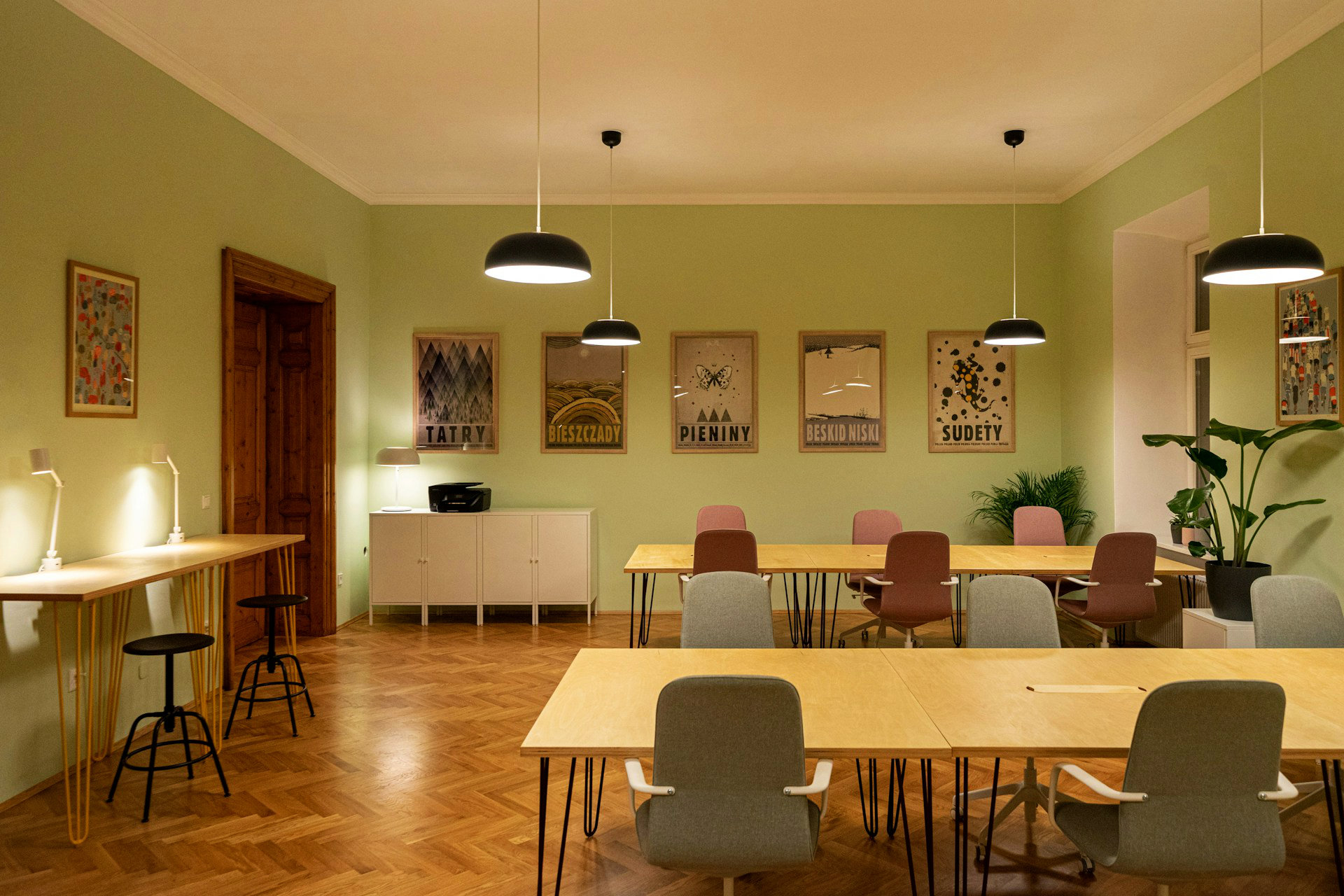The floor is likely the first thing anyone sees when entering an office. It ties the room together, sets the mood, and shapes the impression clients and staff carry with them. Office floors are required to work hard, which involves handling foot traffic, rolling chairs, and the everyday bustle that comes with a busy environment, all while looking sharp and professional.
Wood flooring rises to that challenge. It brings a polished, timeless look, but also warmth and comfort that makes a workplace feel welcoming. Clients notice it. Employees appreciate it. And with the right choice, it lasts for years while staying easy to care for.
Whether you’re giving your office a fresh update or fitting out a brand-new space, wood remains one of the most reliable ways to blend style and function. We’ve seen how the right floor can transform a workplace, and in this guide, we’ll share what to keep in mind when choosing yours.
Why Wood Floors Work Well in Offices
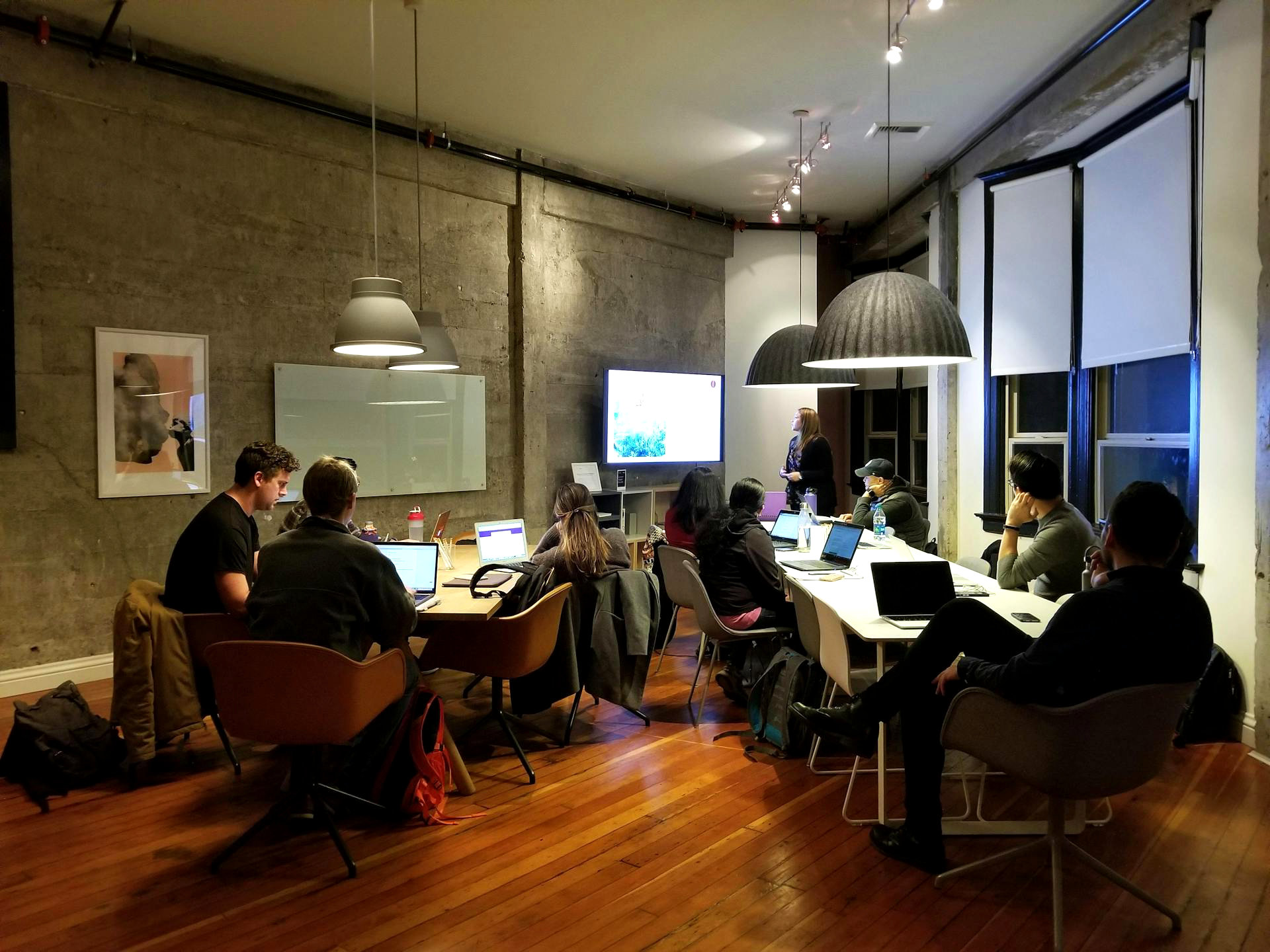
Wood floors have a way of bringing together everything a workplace needs: a professional finish, comfort for staff, and an inviting feel for visitors. Beyond looks, it delivers practical benefits that stand up to the daily demands of an office.
From its timeless style and ease of care to the way it enhances acoustics and complements any décor, there are plenty of reasons businesses continue to choose wooden floors for their workspaces.
Warm and Welcoming Atmosphere
Wood brings a natural character to a space that hard, cold surfaces like tile or concrete simply cannot match. The grain, texture, and warmth of timber create a sense of comfort the moment someone walks in.
This effect makes workspaces feel less sterile and more approachable. For employees, it creates a workspace that is pleasant to spend long hours in, while for clients it sets a welcoming tone from the very first meeting.
Comfort for Long Hours
Wooden floors provide a surface that is easier on the feet and joints compared to harder materials like tile or concrete. This subtle cushioning makes a noticeable difference in workspaces where employees are on their feet frequently or moving between workstations through the day.
The natural give of wood helps reduce fatigue, contributing to overall comfort and wellbeing. Over time, this can improve productivity and make the space a more pleasant place to spend long hours.
Improved Acoustics
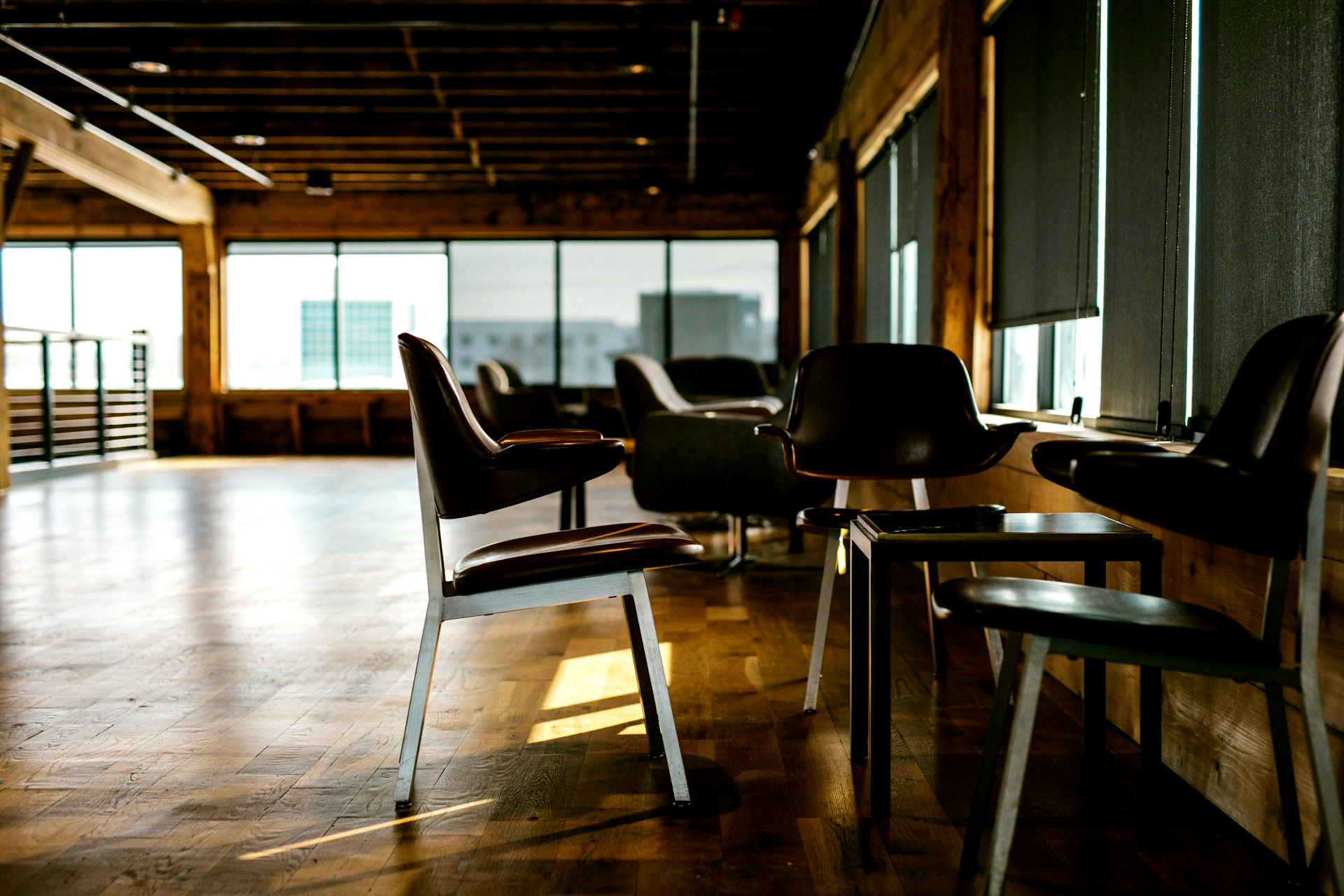
Open-plan spaces can quickly become noisy environments, with conversations, ringing phones, and the movement of chairs all contributing to a constant hum of sound. Hardwood floors helps manage this by naturally absorbing and softening noise.
Unlike concrete or tile, which can reflect sound and amplify echo, timber creates a more balanced acoustic environment. The result is a workspace that feels calmer and less chaotic, helping employees focus and communicate more effectively.
In addition to reducing echo, wood floors pairs well with other sound-absorbing elements like rugs, acoustic panels, and soft furnishings to further improve acoustics. This makes it particularly valuable in collaborative areas, meeting rooms, and reception spaces where clarity and concentration are essential.
Beyond practical benefits, the softer sound environment contributes to a perception of professionalism and attention to detail, subtly enhancing the overall experience for both staff and visitors.
Suits All Décor
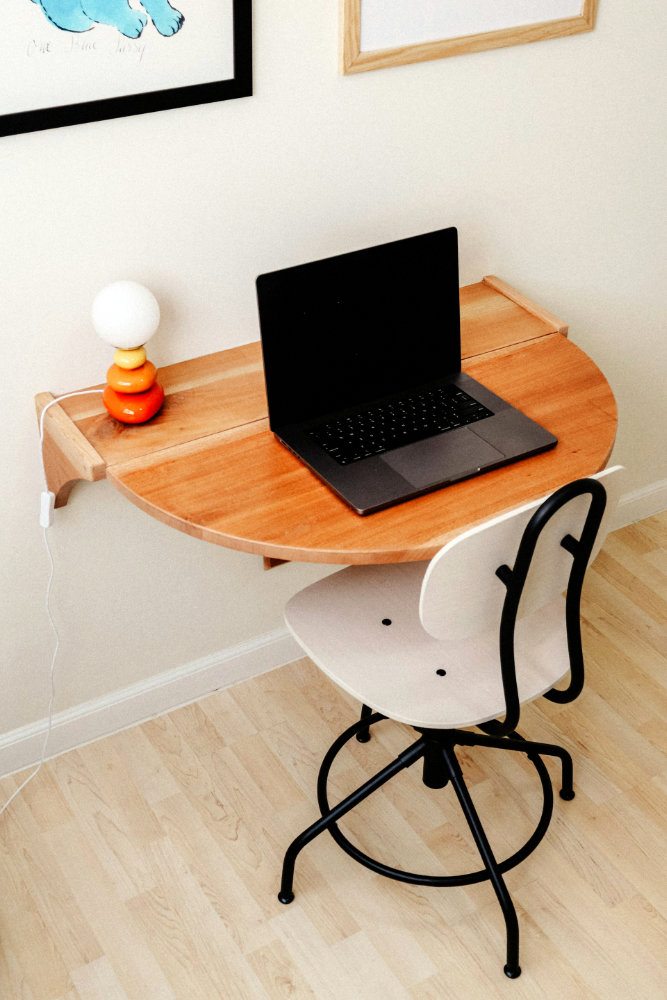
Hardwood floors have a timeless appeal that complements a wide range of interior styles, from modern minimalist offices to more traditional, executive spaces. Their natural grains, colors, and textures add character, creating a professional atmosphere without overwhelming the design. Whether yours features sleek furniture, bold accent colors, or subtle neutral tones, wooden floors provides a versatile backdrop that enhances the overall aesthetic.
Beyond aesthetics, hardwood floors allow for flexibility in decorating and redesigning workspaces over time. You can layer rugs for texture or comfort, incorporate different furniture styles, or adjust the color palette without worrying that the floorboards will clash.
This adaptability makes hardwood a long-term investment for offices, as it can grow with the business and evolve alongside changing design trends while maintaining a cohesive, polished look.
Easy to Maintain
One of the biggest advantages of hardwood floors in a workspace is how simple they are to keep clean. Unlike carpet, timber floors do not trap dust, dirt, or debris, which makes everyday cleaning as easy as sweeping or using a damp mop.
There is no need for frequent vacuuming or deep cleaning routines, which saves both time and effort. Hardwood floors are also durable and age gracefully. Occasional sanding and polishing can restore their original luster, keeping the floor looking fresh for years.
This combination of low daily maintenance and long-term upkeep makes hardwood a practical choice for busy places that need floors that looks professional without constant attention.
Types of Wood Floors
When it comes to choosing wood floors for an office, there is a range of options to suit different needs, budgets, and design goals. Each type of wood brings its own benefits, from the premium appeal and longevity of solid hardwood to the stability and versatility of engineered wood, and the practicality and affordability of luxury vinyl plank.
The right choice depends on factors such as foot traffic, maintenance expectations, and the overall look you want to achieve. In the sections below, we’ll break down each option and share how businesses can make the best decision for their workspace.
Solid Hardwood
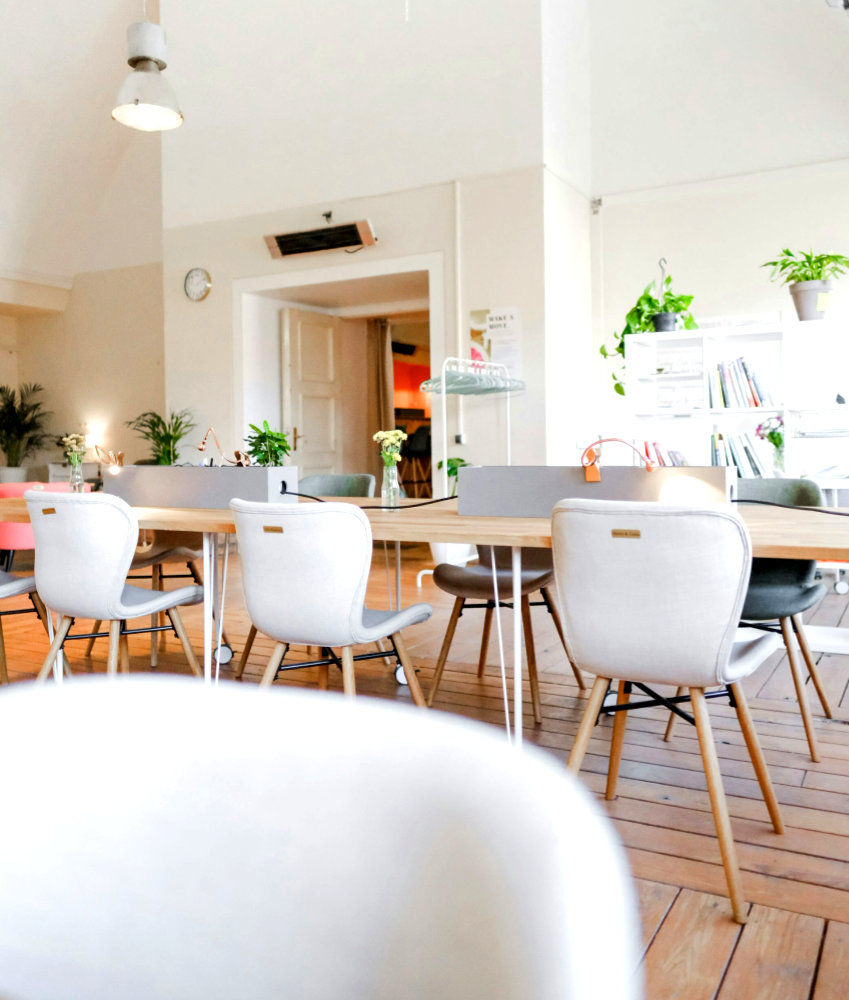
Solid hardwood is the classic choice for offices that want a premium, timeless look. Made from a single piece of timber, it offers unmatched durability and can last for decades when properly maintained. Its natural grain and rich tones create a sophisticated atmosphere that enhances the professional image of any workspace.
While it requires occasional sanding and polishing to maintain its appearance, solid hardwood can be refinished multiple times, allowing it to recover from scratches or wear that would be permanent on other floor types. This combination of longevity, elegance, and character makes it a long-term investment for offices that value both style and performance.
Engineered Wood
Engineered wood is designed for versatility and stability, making it a popular choice for busy office environments. Unlike solid hardwood, it is constructed with multiple layers that resist warping and expand less with changes in temperature or humidity.
This stability allows it to perform well in areas with heavy foot traffic, rolling chairs, and fluctuating occupancy. Engineered wood also comes in a wide variety of finishes and wood species, giving offices the flexibility to achieve the exact look they want without compromising durability.
It combines the warmth and elegance of real timber with practical performance, offering a reliable, low-maintenance option that suits both modern and traditional office designs.
LVP (Luxury Vinyl Plank)
Luxury Vinyl Plank, or LVP, is a highly practical and cost-effective solution for offices where durability is a top priority. Designed to mimic the look of natural wood, LVP offers impressive resistance to scratches, stains, and moisture, making it ideal for high-traffic areas, break rooms, or spaces prone to spills.
It is easy to install and maintain, often requiring nothing more than regular sweeping and occasional mopping, which keeps daily upkeep simple for busy workplaces. LVP also comes in a wide range of colors, textures, and finishes, allowing offices to achieve a polished, professional appearance without the higher investment of solid or engineered wood.
Our team frequently helps clients balance the benefits of LVP against other options, considering traffic levels, maintenance needs, and overall design goals to ensure the best fit for each workspace.
Cost vs Value
When selecting woods for an office, it’s important to consider not just the upfront cost but the long-term value each option provides. Solid hardwood carries a higher initial price, yet its durability and timeless appeal make it a long-term investment. With proper care, it can last for decades and be refinished multiple times, maintaining its elegance and performance. The premium finish also enhances the professional image of the office, creating a lasting impression on clients and visitors.
Engineered wood provides a middle ground, offering the warmth and appearance of real timber at a more moderate cost. Its stability and resistance to moisture make it ideal for high-traffic offices, while still delivering a premium look. Luxury vinyl plank, on the other hand, is highly cost-effective and extremely durable, making it suitable for budget-conscious projects or areas prone to spills and heavy use.
Regardless of the material chosen, investing in quality floors improves employee comfort, supports productivity, and elevates the overall perception of the office, ensuring that the value extends far beyond the initial purchase.
Installation Planning
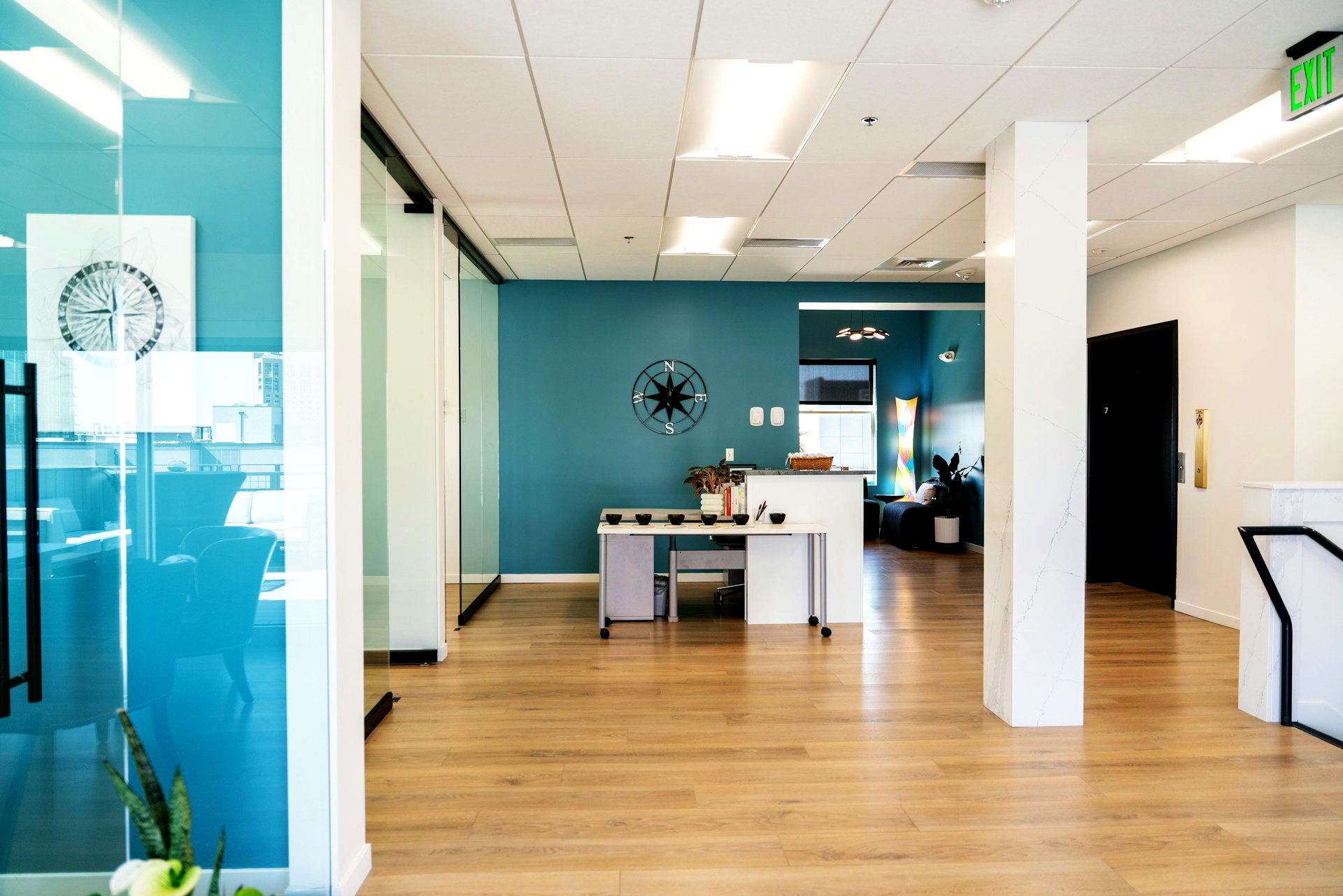
Installing wood flooring in an office requires careful planning to minimize disruption to daily operations, and this is an area where our expertise really makes a difference. From initial site assessments to scheduling around peak business hours, we ensure that the installation process is smooth, efficient, and coordinated to reduce downtime.
Our team manages everything from subfloor preparation to precise fitting and finishing, so there are no surprises along the way. We also advise on temporary workspace arrangements, protective measures for existing furniture, and post-installation care, ensuring that the office remains functional throughout the project.
This level of attention and planning reflects our commitment to delivering high-quality results while keeping client operations running seamlessly.
Flooring That Works as Hard as You Do
Choosing the right wood floors goes beyond aesthetics; it shapes the way employees experience the workspace and the impression clients take away. With careful selection, tailored advice, and professional installation, a well-chosen floor enhances comfort, acoustics, and overall office functionality while reflecting the company’s brand and style.
Whether it’s solid hardwood, engineered wood, or luxury vinyl plank, investing in quality floors pays off in longevity, ease of maintenance, and lasting visual impact. The result is a workspace that feels cohesive, welcoming, and professional for years to come.


